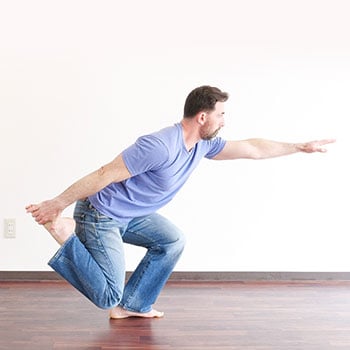You don’t exercise just to chase PRs or stack more weight on the bar.
You want to move better, feel stronger, and handle whatever life throws at you—whether it’s picking up your kid, climbing a trail, or simply getting off the floor without effort or pain.
That’s what GMB Fitness is all about: strength that actually shows up when you need it. Not just in the gym. But everywhere else.
And when it comes to building that kind of strength, single-leg training is one of the most powerful tools you’ve got.
That’s really been at the heart of what we’ve been teaching for going on 20 years now – that your workouts shouldn’t be about piling on the weight even when it makes you feel crappy or adding more reps for the burn- but instead should be fundamentally improving your quality of life outside the gym.
💪 TL;DR: Why Single-Leg Training Works
- Builds strength and control in every part of your lower body
- Teaches balance, body awareness, and joint coordination
- Prepares you for real-life movement—not just gym lifts
- Scales up or down to meet your body where it’s at
Train one leg at a time. Move better all the time. Your knees, hips, and confidence will thank you.
Single-Leg Exercises Are More Than Just “Balance Work”
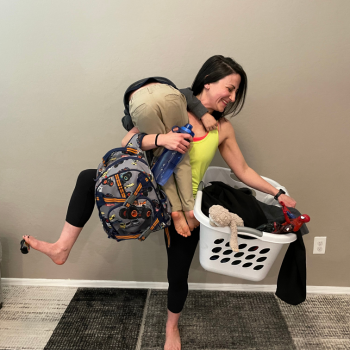 Single-leg training isn’t just about showing off control or hammering your quads. It builds the kind of stability, strength, and coordination you actually use in everyday movements:
Single-leg training isn’t just about showing off control or hammering your quads. It builds the kind of stability, strength, and coordination you actually use in everyday movements:
- Walking, climbing, twisting, and carrying uneven loads
- Moving confidently through sports, hiking trails, or parenting chaos
- Preventing injury by addressing imbalances and neglected weak points
It’s real-world training for real-world bodies.
There are dozens of ways to train one leg at a time—but instead of overwhelming you with 30+ variations, we’re going to focus on a few key movements that consistently deliver for our clients.
Shrimp Squats & Pistol Squats: The Power Pair
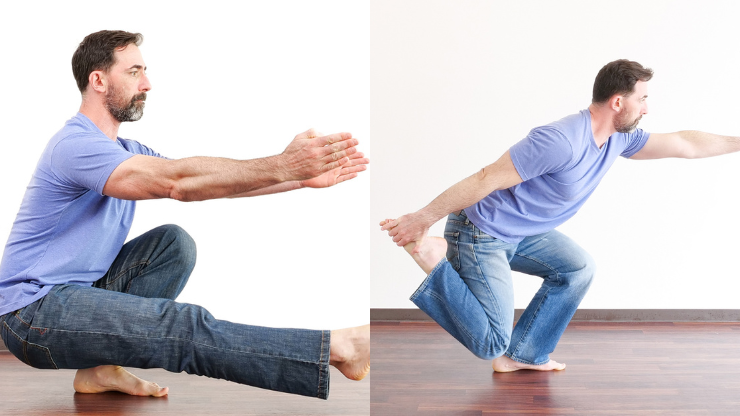
Let’s start with two of our favorite leg strength builders: Shrimp Squats and Pistol Squats.
These two form a core part of our approach to leg strength training.
They look impressive—but the point isn’t to chase perfection. It’s about what you gain from practicing them:
- Strength through your entire range of motion
- Joint control and balance under load
- Mobility that actually feels like freedom
Whether you’re still working on your first rep or fine-tuning the bottom position, what matters is the process.
Progress isn’t a race. No one’s handing out medals for picture-perfect pistols.
Here’s Eduardo with some great tips for how to approach practicing pistols and shrimp squats that will take a bit of the frustration away and help you gain as much as you can from whatever level you are at right now.
Pistol Squats
View this post on Instagram
✅ Pistol Squat Tips
- Start “bottoms-up”: Practicing from the lowest position helps you build control faster.
- Focus on the shift: The hardest part isn’t standing up—it’s the transition from bottom to top.
- Full tutorial here → The Unorthodox Pistol Squat Progression
Shrimp Squats
View this post on Instagram
✅ Shrimp Squat Tips
- Best for beginners: It’s easier to scale and modify than the pistol.
- Knees over toes? Totally fine. In fact, it’s essential for building joint strength—just do it mindfully.
- Shrimp vs Pistol Full Tutorial → Get Better Hips and Knees with the Shrimp Squat
Front and Back Scales: Stability You Can Feel
Now let’s shift our focus to the often overlooked rare gems of single-leg exercises: the Scales.
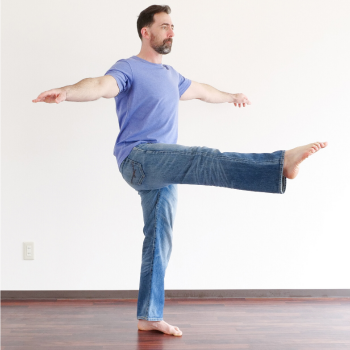
Scales don’t look hard. But give them five minutes, and you’ll realize they’re working muscles—and neural pathways—you didn’t even know you had.
These deceptively simple movements build:
- Hip and foot stability
- Active flexibility
- Precise body control
They’re a window into your movement quality. Practicing Scales helps you clean up wobbly mechanics and build strength from the ground up.
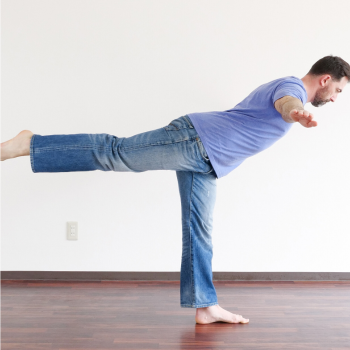 They require you to engage muscles you didn’t even know played a role in your balance and stability. As you practice, you’ll find these exercises challenging your body in new ways, highlighting areas that have been neglected.
They require you to engage muscles you didn’t even know played a role in your balance and stability. As you practice, you’ll find these exercises challenging your body in new ways, highlighting areas that have been neglected.
And that’s really the essence of what single leg training is all about. Every movement where you are challenged to be mostly on one leg, no matter how straightforward it appears, can improve your useable strength and balance.
Scales
View this post on Instagram
✅ Scale Tips
- Start with the Front Scale—lift one leg forward while keeping posture tall and stable.
- Then try the Back Scale—lift the leg behind you while keeping your hips square.
- Balance is more than not falling. It’s strength, awareness, and control all working together.
- Full Tutorial → The Surprising Effectiveness of Scales
Peacock Squats: Where Power Meets Agility
The Peacock Squat teaches your body how to adapt—because life isn’t a straight line. This single-leg variation challenges your hip rotation, balance, and coordination as you reach your leg out to the side.
It trains your body to respond to uneven, off-angle forces—just like when you dodge an obstacle on a run, reach sideways in the kitchen, or pivot during a game.
Real strength includes the ability to shift, rotate, and react.
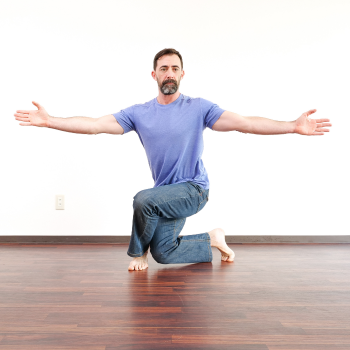 This nuanced exercise significantly enhances your hip rotation control, an essential skill often overlooked in standard training routines. Whether you’re on a sports field making rapid directional changes in a soccer match or basketball game, or at home maneuvering awkward spaces during cleaning or rearranging, your body is frequently asked to move beyond the straight and narrow.
This nuanced exercise significantly enhances your hip rotation control, an essential skill often overlooked in standard training routines. Whether you’re on a sports field making rapid directional changes in a soccer match or basketball game, or at home maneuvering awkward spaces during cleaning or rearranging, your body is frequently asked to move beyond the straight and narrow.
It prepares you for the unpredictable nature of daily activities, ensuring you’re as agile and adaptable as you are strong.
Peacock Squats
View this post on Instagram
✅ Peacock Squat Tips
- Start small—even a small leg shift changes how your hips respond.
- Feel your glutes fire as your body resists rotation. That’s where the magic happens.
You Don’t Need to “Master” Anything to Benefit
It’s normal to want to “perfect” and get better at one move before you try mixing things up. And while we are big fans of continually practicing “the basics”, that doesn’t mean just hammering three singular exercises over and over and never trying anything else!
You might be thinking: “I can’t even do a full pistol yet—should I wait to try Scales or Peacock Squats?”
Nope.
You don’t need to “earn” variety.
In fact, exploring different single-leg variations helps you improve faster—because each one teaches your body something new. They build on each other, and together, they create a more adaptable, responsive body.
View this post on Instagram
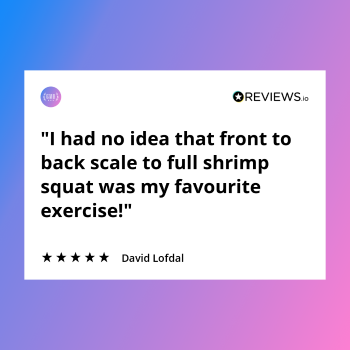 While there’s value in striving for excellence in specific exercises like the pistol squat or shrimp squat, it’s equally important to recognize the benefits of versatility in your training regimen.
While there’s value in striving for excellence in specific exercises like the pistol squat or shrimp squat, it’s equally important to recognize the benefits of versatility in your training regimen.
You don’t have to wait until you’re “perfect” at one move before adding another.
- Try flowing from a Shrimp to a Scale
- Add rotation like a Peacock at the end of a squat
- Use different variations depending on how your body feels that day
This is the kind of exploratory practice that not only builds strength, but keeps your training fun and sustainable.
You don’t move in isolation in the real world. So your training shouldn’t either.
Want to Build Real-Life Strength? Start Here
If you want to build practical strength, mobility, and total-body control—with a focus on movement that matters—check out Integral Strength.
It’s our skill-based strength program that includes:
✅ Smart, scalable single-leg progressions
✅ Upper-body control and integrated movement
✅ Structured routines that build usable strength, not just muscle


